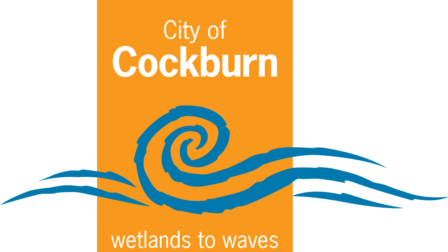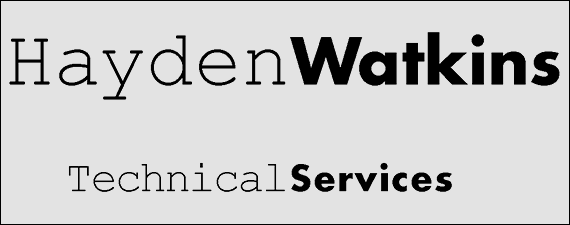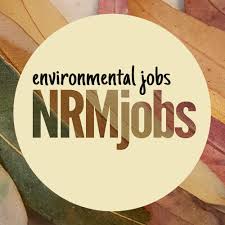Conference
Program
The overarching theme of our conference followed the Ramsar theme for 2022 of ‘Wetlands Action for People & Nature’. The 2-day conference was divided into 4 half-days, each of which is set to feature the following themes - Leadership, Reconciliation, Sustainability and Partnerships.
LEADERSHIP
Day 1 | Morning
Wednesday, 2nd February 2022
RECONCILIATION
Day 1 | Afternoon
Wednesday, 2nd February 2022
SUSTAINABILITY
Day 2 | Morning
Thursday, 3rd February 2022
PARTNERSHIPS
Day 2 | Afternoon
Thursday, 3rd February 2022
THE PARTNERSHIPS SESSION
Day 2 | Afternoon | Thursday, 3rd February 2022
To initiate and sustain the widest possible proactive participation, support and engagement for the conservation of wetlands.
Keynote
Partnerships – Supporting People to Work Together For Positive Ecological Impact
Partnership rolls off the tongue but what does it need to mean in this critical decade between 2020 and 2030? This presentation will discuss partnerships and present an overview of the characteristics of effective partnerships. In it we pose questions about what we need to consider when working together on major environmental challenges in the Perth Region.
Perth NRM is embarking upon an ambitious program around collective engagement that moves beyond the traditional approaches of individual organisations addressing similar environmental challenges to a collective approach that relies on strong partnerships between community, industry, and government. This approach is organised around shared outcomes with tracking of agreed measures and transparent reporting of progress. The application of a collective impact approach will ensure our natural ecosystems can be shared with future generations.
Case studies of partnerships in the Perth Region will be highlighted and questions posed about what led to their success in the short and longer-term. There will be an opportunity for the audience to provide input on successful partnerships and how they want to be included in collective impact projects for positive ecological impact.
Expert Presentation 1
Saving our Snake-Necked Turtle Program
The Southwest Snake-necked Turtle (Chelodina oblonga) is endemic to southwest WA, and is now under threat from urbanisation, climate change and predators, with recent research showing very few juveniles in our urban wetlands (Santoro et al. 2020). The ‘Saving our Snake-Necked Turtle program seeks to engage people across south west WA in hands-on conservation and citizen science to better understand and protect this iconic species. In collaboration with the national program '1 Million Turtles' , we are working together with the community to conserve freshwater turtles across Australia. The project will provide critical information that will be used to create and implement conservation management plans. Thanks to the support and development by the City of Cockburn, in partnership with the Turtle Ecology Team at Murdoch University (science), Department of Biodiversity, Conservation and Attractions (PWS volunteer program), WA Wildlife (animal handling and health) and The Wetlands Centre Cockburn (educational facilities), the Turtle Tracker program has already been developed, test-driven and improved over the nesting seasons of 2019, 2020 and 2021. In its first two years of operation around Bibra Lake, over 50 nests were protected and reductions in nesting female mortality were observed. Harnessing the power of communities throughout the southwest via expansion of ‘Turtle Trackers’ throughout C. oblonga’s range could be instrumental in saving this species from potential extinction. Working with a host of partners across local government, catchment and NRM groups, and state government agencies we are seeking to engage as many people as we can across south-western Australia to partner with us to deliver this exciting and critical project. The project has five elements: 1) TurtleSAT: Engaging the wider community by recording turtle or nest sightings using the national TurtleSAT app; 2) Turtle Trackers: Creating dedicated teams of ‘Turtle Trackers’ at selected wetland or rivers across the snake-necked turtle’s range to protect females and their nests; 3) Engaging community in research: investigating turtle populations, characteristics of turtle habitat and a national predation survey; 4) Range-wide surveys: Conducting turtle population surveys at additional sites so that we can monitor improvement in ‘Turtle Tracker’ wetlands; and 5) creating on-going community-led turtle recovery programs. In this workshop we will outline the program and show how you can be involved and make a difference to save this turtle from potential extinction.
Expert Presentation 2
The Frog Files- the why and how to revegetation guide
Frogs live in the air, land and water hence understanding their life cycle and their importance in the system is vital to sustaining a diverse ecosystem.
Did you know 95% of frog biomass is food for other critters? And did you know frogs eat many critters we call pests?
Frogs have significant values in both indigenous and non-indigenous cultures, they serve as totems for many traditional peoples’ and indicators for when a food source is available and are the ultimate indicator of ecosystem health. Going to catch tadpoles and to rear them in an aquarium at home and then return them back to the wetland, is my first memory of interacting with the wetland.
Frog numbers have undergone substantial declines in the past 30 years and there are numerous reasons for this including habitat destruction, salination, declining water quality and quantity.
Most of our frogs are brown, have claws and don’t like a lot of water, only at a certain time.
Understanding the biology of the frogs in your area offers you the opportunity to build your revegetation projects that will create habitat not only for those frogs but all the other beneficial critters such as pollinators and predators associated with them.
Join The Frog Doctor, Johnny Prefumo on a journey to understand and appreciate our iconic frogs.
Expert Presentation 3
The Hidden World of Noogenboro - Herdsman Lake Discovery Centre takes flight
Environmental education is central to the conservation of wetlands: people protect what they care about. This presentation will explore the role of environmental centres in conservation, through the lens of the newly re-opened Herdsman Lake Discovery Centre. Noongenboro / Herdsman Lake is a world-class wetland in inner city Perth. With the generous support of Lotterywest, along with many volunteers, friends and partners, the Centre now has a new name, a new look, updated educational programmes and vibrant community events, all interwoven with Noongar culture. Partnerships with Noongar Elders, community members, local businesses, schools and government have been central to reimagining the Discovery Centre. The Centre is now a community hub with nature experiences for everyone. Partnerships have enabled the Centre to grow and explore innovative programmes and events, engaging a broader range of community than the traditional audience of a nature education centre. We're still looking for partners and programmes - they could include you! www.wagouldleague.com.au
Case Study 1
School and Community Partnerships: Building Relationships to Enhance Wetland Education
Our students are the future custodians of the Peel-Harvey Estuary helping to look after local ecosystems through a range of projects in their classrooms, schools and communities. These key projects have been created through the development of long term relationships with not for profits, researchers and environmental groups who have a vested interest in the long term protection of the estuary. By collaborating and meeting with the various environmental conservation organisations in the catchment there can be more powerful outcomes and messages regarding the health and sustainability of the Peel-Harvey Estuary.
Creating Mandurah’s first Dolphin Fin Guide involved creating partnerships with Mandurah Dolphin Volunteer Rescue Group, Mandurah Cruises and researchers from Murdoch University. Passionate students organised Mandurah’s first Dolphin Forum to bring these groups together to inform the community about our local dolphin population. This initiative fostered leadership, , organisation skills, grant writing and has grown into regular events still hosted by our students.
The Black Bream Stock Enhancement Project partnered with The Peel Harvey Catchment Council and Murdoch University researchers which led to the establishment of a purpose built aquaculture classroom. Students involved in the pilot built and managed the system along with the researchers. They developed real world skills in practical experimental research in a school based facility involving dedication, time commitment outside of the class, precision, perseverance and adaption to the changing needs of the project.
Our relationship with the Peel Harvey Catchment Council has been integral to many of these opportunities. The Red-necked Stint Project with Milly Formby and Wingthreads arose through the Shorebird 2020 Birdcount. Our students had the opportunity to become ‘experts’ on the endangered bird and its specialised adaptions. This developed their creative and communication skills to create an education package around the ‘TimTam’ bird which thy shared with local primary schools and global partners from India and Manila.
The Shellfish Gardening Project with partners The Nature Conservancy and the Binjareb Indigenous Rangers where students grew mussels from juveniles to adults in specially designed baskets and collected data about mussel growth and other colonising marine life. The mussels will be used to explore mussel colonisation in selected locations in the estuary, where over time, the reefs are expected to become vibrant ecosystems that will help improve water quality, biodiversity, and fish stocks in the estuary.
Although bringing these projects to fruition there has been a massive time commitment outside class time involving volunteering, attending presentations and workshops, linking them to the science curriculum and getting buy-in from other staff members the experiential learning by our students has given them the opportunity to be involved in real world science applications raised their and awareness about the fragility of our local ecosystem. They are helping to raise awareness within the community of the importance of nature conservation and are actively involved in the quest for sustainability creating resources, games, books and videos presenting at forums, Conferences, Kids Teaching Kids, Primary Schools.
Case Study 2
Connecting with Schools: A Win-Win and Win for Wetlands!
The Wetlands Centre has been reviewing its Primary School programs over 2021. This case study gives some insight into the shared benefits of school excursions for students, teachers, the community and of course Wetlands. It examines how wetlands education can achieve multilayer outcomes, through simultaneously delivering curriculum-linked student learning, community engagement opportunities, and ultimately fostering positive wetland care behaviour. Observations of how this can be better framed in the future are considered and if time allows a short discussion on 'what is needed' by schools and other stakeholders will be facilitated.








